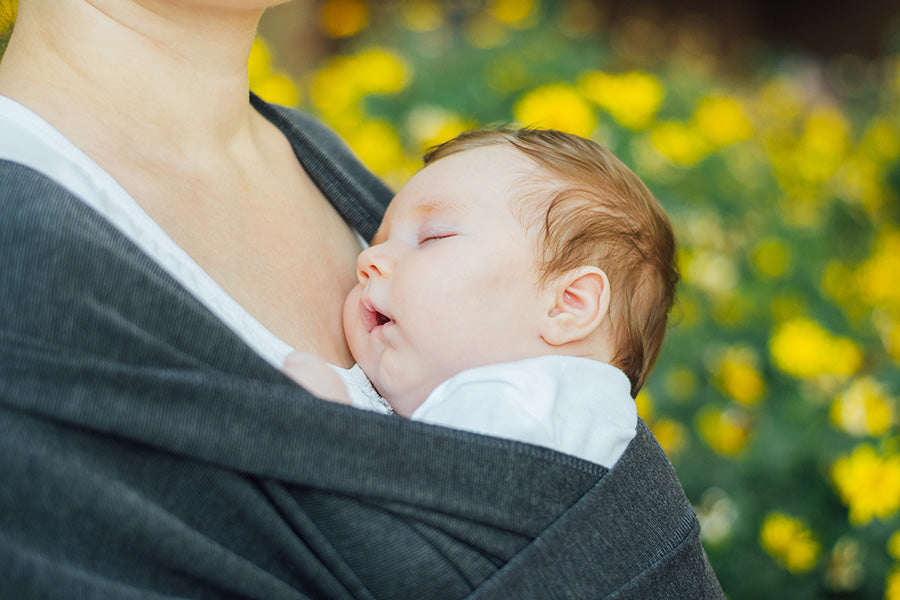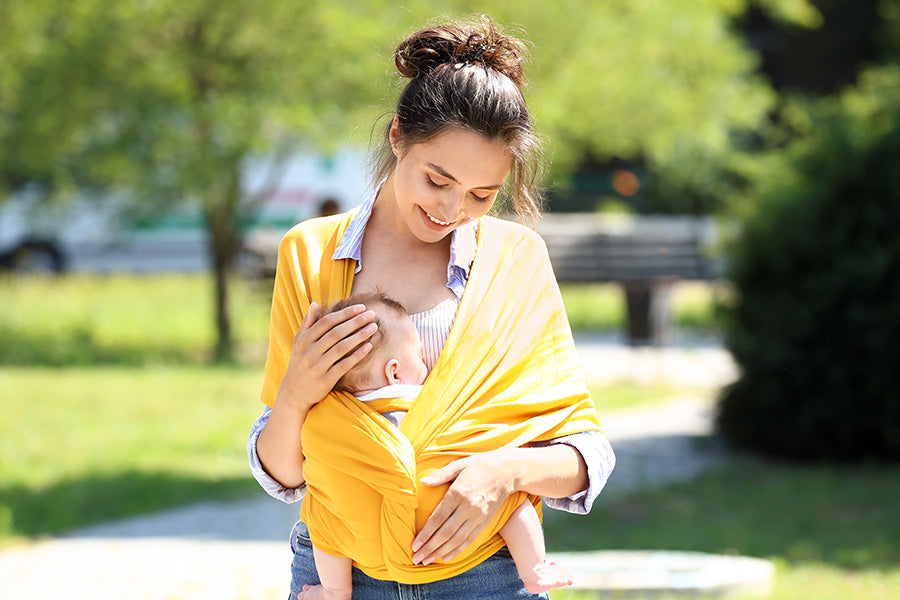All
Choosing the Best Baby Carrier
Guillaume Dls

Are you looking for the best baby carrier but can't quite make sense of all the choices on offer? That's normal, and even good news, because it means there's a choice for every parent.
It's important to remember that a baby carrier considered "ideal" by some parents won't necessarily be so for others. So, the idea is not to find THE best baby carrier at any price but rather to find the one that best matches your criteria.
To help you do just that, we've put together this short guide specifically to answer the question "How do I find the best baby carrier? We hope it will help you see things a little more clearly!
What Criteria Should You Take Into Account When Choosing a Baby Carrier?

As stated in the introduction, a baby carrier that's right for one baby and their parents won't necessarily be right for others. Apart from safety, which should be a central factor for all baby carriers, the other criteria may be more or less important to you. It all depends on your personality, that of your partner, and what you're looking for when buying such an accessory.
Here is a list of criteria that should be taken into account when selecting a baby carrier:
-
Safety;
-
Ease of use;
-
Comfort;
-
Size;
-
Durability;
-
Ease of maintenance;
-
Budget.
-
Tailored to your specific needs.
Start by taking out a pen and paper or writing down on your phone which criteria are most important to you. Apart from safety, which must be at the heart of your purchasing decision, don't hesitate to order the elements so you can clearly see your priorities. This will give you a better idea of which products are right for you.
Safety

You need to be able to walk around with your baby without fear of anything happening to them. So, your baby carrier should be a tool that makes your life easier and gives you peace of mind, not a risk to your child.
So, for peace of mind, make sure your baby carrier meets certain basic standards, such as:
-
While in the carrier, your child's chin should not rest on their chest (which could limit their ability to breathe normally);
-
Their head should be well-supported and not moving in all directions;
-
You must be able to see their face at all times. It's important to be able to check your child's condition regularly, without too much effort, to see if they’re feeling well, can breathe properly, etc;
-
The fabric of the sling should not pass over the baby's face;
-
The whole assembly can be adjusted so that the baby's back is well-supported and there is no risk of falling. As far as the baby's exact position is concerned, we normally aim for an "M" sitting position. In other words, the back should be round, the pelvis slightly forward, and the knees bent at a 90° angle.
Ease of use

Secondly, some baby carriers are easier to use than others. As a general rule, you don't want to have to put everything back in place every time you go out for a walk with the baby. An easily adjustable baby carrier, which saves you a few minutes of adjustment for each outing, could make a big difference in the end.
Comfort

The right baby carrier should be comfortable for both the baby and the wearer. If your baby starts out small and not very heavy, remember they may grow quickly and weigh more in the carrier. It's best to ensure that the baby carrier is as comfortable as possible for the wearer, as if not it could ultimately lead to back, neck, or head discomfort.
For your own comfort, ask yourself the following questions:
-
Are the shoulder straps padded?
-
Does the baby carrier have a support belt (to help distribute weight more evenly and reduce pressure on the back, neck, shoulders, and hips);
-
Does the position of the baby carrier on your stomach or back suit you? Is it too high or too low? And if so, can it be adjusted?
And for the baby, it goes without saying that the carrier should hug their body properly, with just the right amount of padding but without "compressing" them. The idea is that their body can relax and enjoy the ride without being in an uncomfortable position. A comfortable baby carrier usually has a headrest, high-quality lumbar support, and a hood.
Prone and Supine Positions
There are two main ways of carrying a baby: on the stomach and on the back. It's a matter of preference for the person carrying. The more popular prone position is often considered easier to tame. The dorsal position, on the other hand, has a slightly steeper learning curve and requires help from the outset.
Preformed (or “Rigid”) Baby Carriers and Soft Baby Carriers
The next step is to choose the type of material and its flexibility.
A "preformed" baby carrier doesn't move. It can be adjusted with straps and other fasteners to support the baby safely, but it cannot change shape. Baby will therefore remain in the same position when you're on the move. Another advantage of this type of baby carrier is that it is often designed to adapt to changing temperatures, with panels that can be removed to let more or less air through as well as breathable fabrics, etc. This model is also recommended for parents who love hiking or who want to move around with their little one. A baby carrier of this kind keeps you securely in place, no matter how active the wearer is.
On the other hand, the soft baby carrier is, as the name suggests, made from soft fabric. Also known as a "Mei Tai" bag or "sling", it conforms to the baby's shape, without forcing them into any particular position. Another advantage is that once folded, it takes up no space. So it can easily be stowed away in a backpack, handbag, or other bag. It also facilitates breastfeeding and is – as a rule – less expensive.
Size

As with adults, not all babies are the same size. So you need to find a baby carrier that's right for your baby's size, age, and weight. An unsuitable baby carrier may not only hurt your baby but also put them in an unsafe position.
It's also important to have a baby carrier that allows your little one to be at the right height to receive kisses and cuddles. This will enable you to reassure your baby when they start crying, or simply give you the opportunity to share a dose of love more easily when you're in overdrive.
Durability

Depending on the quality of the materials used, some baby carriers are designed to last longer than others. The question of material quality is linked to another very important one: budget (we'll come back to this soon), as a better-worked product is naturally a little more expensive.
If you consider durability to be a decisive factor in choosing a baby carrier, make sure that it has been created from good materials (such as cotton and polyester). Fabrics must be strong and tear-proof, straps must be able to withstand tension and be padded with quality stuffing, and seams must be reinforced.
It should be noted that some baby carriers are designed to withstand particular conditions (e.g. during activities like hiking) and certain positions. In this sense, it's possible that a belly sling will be more resistant if it's used so that your baby faces the world, or rather with their back to the world.
Easy Maintenance
A soft baby carrier is generally easier to clean than a rigid one (as it is "less complex"). However, in addition to the type of sling, it's important to remember that some materials are more absorbent and can be more easily stained.
If you don't have a lot of time to devote to maintenance and cleaning, then opt for simple models, with darker colors and more resistant materials.
The Budget
Depending on your budget, you can already eliminate certain choices. If you're one of those rare couples with an unlimited budget, then go for the brands that offer the best comfort, ease of use (and maintenance), and excellent durability.
On the other hand, if your budget is limited, then you'll have to choose which criteria you want to prioritize, without of course compromising on safety. Perhaps a model that's very comfortable, but made from slightly less durable materials will suit you? Or perhaps you'd prefer a model that's very easy to use but made from materials that are a little harder to clean? There are many options out there. It's up to you to choose according to your own preferences (and also bearing in mind those of your partner).
Tailored to Your Specific Needs

Perhaps you have fitness or lifestyle needs we haven't mentioned? Do you suffer from back pain and carrying a baby on your back is absolutely out of the question? Or, do you live in a rainy region and certain types of fabric are already off-limits? The choice is yours!
If there are certain criteria that are essential for you in choosing the ideal baby carrier, don't hesitate to add them to your list. The purpose of this article is simply to present a few basic criteria and guide you in your search.
So, How Do You Choose the Right Baby Carrier?
In addition to the safety offered by your baby carrier, remember to buy one that's comfortable for you and your baby, and that fits your budget. The other criteria listed above will be more or less important to you, depending on your own preferences.
However, don't hesitate to take some time to think about your decision and go to the store to try out different products, as the baby carrier will be used frequently out and about or even in the house. So it's better to buy the right accessory from the start, rather than buying the wrong one and creating an uncomfortable situation for both you and your baby.
***
Looking for more tips for moms and dads? Take a look at our articles on baby well-being. Or browse our selection of baby clothes on our online store.

